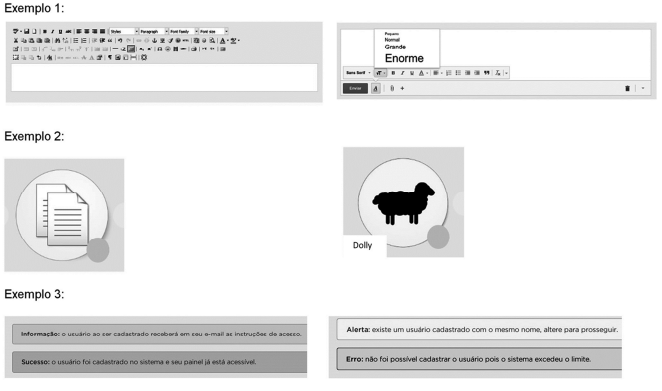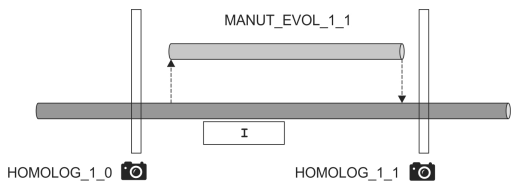Questões de Concurso Público Câmara Legislativa do Distrito Federal 2018 para Analista de Sistemas - Área 2
Foram encontradas 60 questões
One of the things Jaime appreciates about Accela is that “they believe in their product so much, you don’t have to sign on for a year. With Accela, we didn’t feel they were trying to get the most money they could from the agency. We felt they truly were a company that wanted to work with us and were understanding of all the different requirements we had.”
One of the things Jaime appreciates about Accela is that “they believe in their product so much, you don’t have to sign on for a year. With Accela, we didn’t feel they were trying to get the most money they could from the agency. We felt they truly were a company that wanted to work with us and were understanding of all the different requirements we had.”
One of the things Jaime appreciates about Accela is that “they believe in their product so much, you don’t have to sign on for a year. With Accela, we didn’t feel they were trying to get the most money they could from the agency. We felt they truly were a company that wanted to work with us and were understanding of all the different requirements we had.”
I. O cidadão exerce o papel de eleitor e pode exercer também o de mesário. Um caso de uso para cadastrar cidadão pode ter um desdobramento para os tipos eleitor e mesário.
II. Durante o processo de cadastro, se ocorrer de um cidadão eleitor solicitar ser também mesário, o sistema deverá realizar um caso de uso específico para cadastrá-lo como mesário.
III. Toda vez que um cidadão mesário necessitar acessar o sistema eleitoral para averiguar alguma situação, ele deve se “logar” e, então, sempre, nessa situação, o sistema deverá realizar um caso de uso para autenticar o mesário (validar login e senha).
Em um Diagrama de Caso de Uso, os relacionamentos derivados da especificação dos requisitos acima, correspondem, correta e respectivamente, a
− Uma classe de objetos denominada Regulamento possui características específicas e outras provenientes de uma superclasse denominada Lei. − Essa mesma classe Regulamento também possui outras características provenientes de outra superclasse denominada Decreto. − Uma classe denominada Minuta de Decreto também possui características específicas e outras provenientes das superclasses Lei e Decreto. − Os métodos invocados no tratamento das instâncias de Regulamento e Minuta de Decreto têm as mesmas assinaturas, no entanto se comportam de maneira diferente.
A situação acima denota o uso dos conceitos e princípios da orientação a objetos
I. deveriam entregar software funcionando com frequência, na escala de semanas até meses, com preferência aos períodos mais curtos. II. mudanças de requisitos não deveriam ser aceitas no final do desenvolvimento para que não houvesse interferência na fase de testes. III. seriam blindados da interferência da área de negócios durante todo o curso do projeto.
Corresponde aos princípios do Manifesto Ágil de desenvolvimento de software o que consta APENAS em
I. Sempre que uma pessoa se dirigir ao setor de Ouvidoria para registrar uma reclamação, esta pessoa deve se identificar com seu documento de identidade. O profissional da Ouvidoria deve certificar-se que o documento seja válido.
II. No módulo de busca, a localização dos projetos por assuntos, por ano e por autores é um processo oneroso em termos de memória e processamento devido ao alto volume de dados. Em função disso, o sistema deverá prover recursos de multithreading que possibilitem processar as buscas de forma paralela, de maneira que o tempo de resposta seja limitado a 30 minutos por busca.
III Todo Deputado da Mesa Diretora deverá receber e-mails de aviso por meio do sistema. As informações de recebimento e de abertura dos e-mails deverão ficar registradas eletronicamente.
Uma Analista de Sistemas, ao analisar as definições, conclui que

Considerando que cada um dos exemplos é formado por um par de imagens, conclui-se que
I. em função de uma mudança na legislação sobre a transparência das ações públicas, que obrigou a equipe a modificar uma função do sistema diretamente atingida. Como esta mudança exigiu a disponibilidade de um grande volume de informações ao público por meio da web, o sistema foi migrado para outra plataforma mais robusta;
II. para melhorar a sua qualidade, de forma que novos recursos de acessibilidade foram incluídos. Esses recursos não estavam previstos no documento de requisitos original do sistema; e
III. após ter apresentado defeitos ao ser utilizado por usuários da Câmara. Embora o sistema tenha passado pela fase de testes, os erros não foram detectados. Uma nova versão do sistema foi disponibilizada após as modificações.
Nas situações I, II e III o software passou, correta e respectivamente, por manutenções do tipo
Considere a figura abaixo.

(Adaptado de: https://brunoleite.wordpress.com/2012/02/24/principios-basicos-da-gerencia-de-configuracao/)
Com base na estrutura de gerenciamento de configuração de software apresentada na figura, conclui-se corretamente que